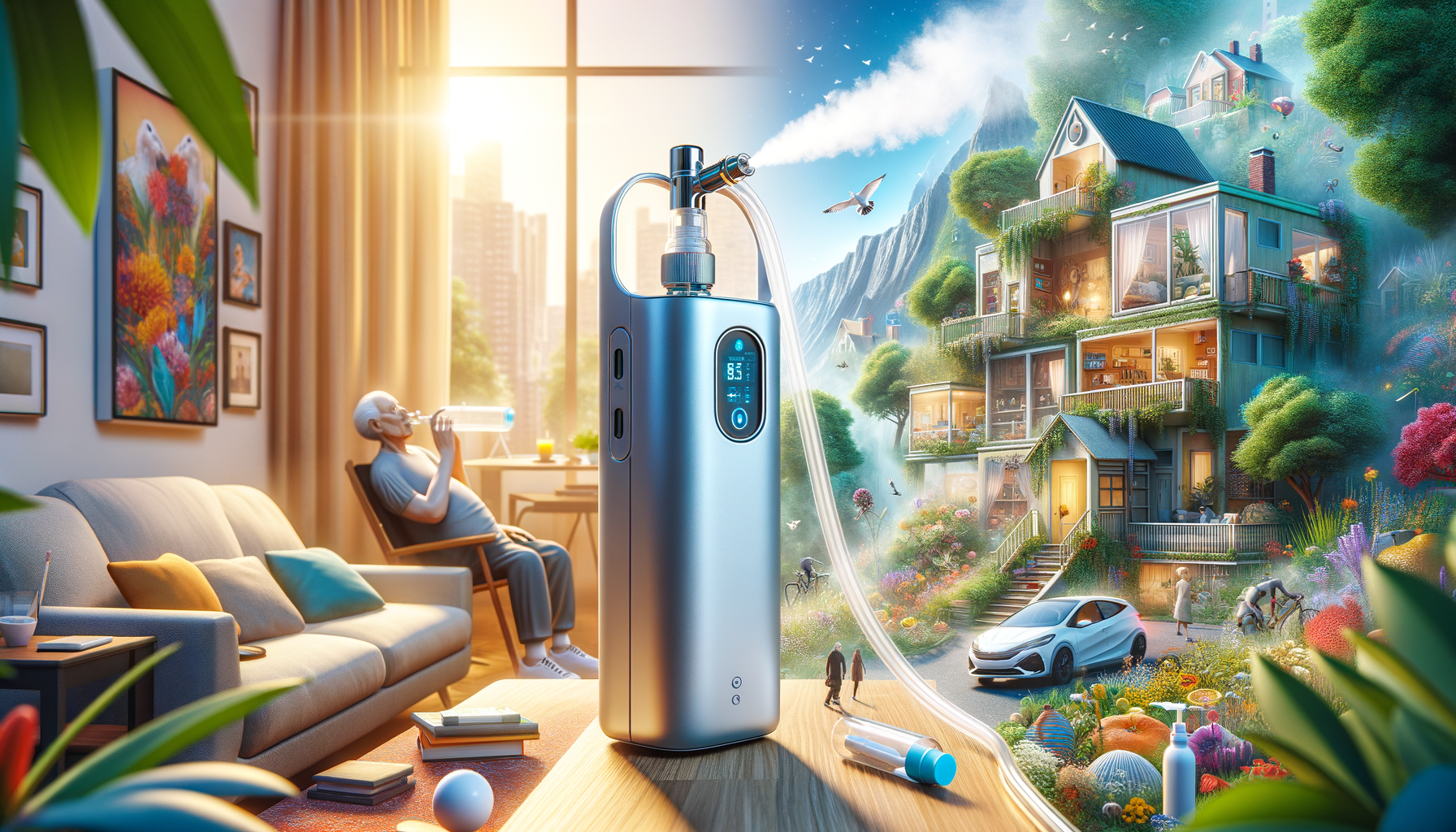Understanding Portable Oxygen Concentrators
Portable oxygen concentrators (POCs) have revolutionized the way individuals with respiratory conditions manage their health. Unlike traditional oxygen tanks, these devices extract oxygen from the surrounding air, providing a continuous supply of oxygen without the need for heavy, refillable tanks. This advancement has been a game-changer for many, offering increased mobility and independence.
POCs work by drawing in air, which is composed of approximately 21% oxygen, and filtering it through a series of sieve beds that remove nitrogen, thereby increasing the oxygen concentration. The purified oxygen is then delivered to the user through a nasal cannula or mask. This technology not only enhances the quality of life for users but also reduces the logistical challenges associated with oxygen therapy.
For those living with chronic obstructive pulmonary disease (COPD) or other respiratory ailments, the ability to travel, exercise, and participate in social activities without the burden of traditional oxygen tanks is invaluable. POCs are designed to be lightweight and compact, making them easy to carry and use on the go. Additionally, many models come with various settings to adjust the flow rate according to the user’s needs, ensuring optimal comfort and effectiveness.
Key Features to Consider
When choosing a portable oxygen concentrator, several key features should be taken into account to ensure it meets your specific needs. One of the most important factors is the device’s weight and size. POCs are available in a range of sizes, from small, lightweight models that can be carried in a backpack to larger units that offer extended battery life but may be less portable.
Battery life is another crucial consideration. Depending on your lifestyle and daily activities, you may require a concentrator with a longer battery life to avoid frequent recharging. Some models offer additional battery packs or can be charged via car adapters, providing flexibility for those who travel frequently.
Flow settings are equally important, as they determine the amount of oxygen delivered. Most POCs offer pulse flow settings, which provide oxygen only when the user inhales, conserving battery life. However, some models also offer continuous flow settings for those who require a constant oxygen supply. It’s essential to consult with a healthcare provider to determine the appropriate flow setting for your condition.
Comparing Popular Models
With a variety of portable oxygen concentrators available on the market, it can be challenging to choose the right one. To make an informed decision, it’s helpful to compare popular models based on their features, performance, and user reviews.
Some models are renowned for their lightweight design, making them ideal for active individuals who need a device that won’t hinder their mobility. Others are well-regarded for their exceptional battery life, which can be a critical factor for those who spend extended periods away from home or travel frequently.
It’s also worth considering the noise level of the device. While most POCs are designed to operate quietly, some models are quieter than others, which can be an important consideration for users who plan to use the device in social settings or while sleeping.
To ensure you’re making the right choice, read user reviews and consult with healthcare professionals who can provide insights based on your specific needs and lifestyle.
Benefits of Portable Oxygen Concentrators
The benefits of portable oxygen concentrators extend beyond mere convenience. For many users, these devices offer a new lease on life by providing the freedom to engage in activities that were previously challenging or impossible with traditional oxygen tanks.
Among the advantages are:
- Increased Mobility: Lightweight and compact, POCs allow users to move freely without being tethered to bulky tanks.
- Improved Quality of Life: With the ability to travel, exercise, and participate in social events, users often experience enhanced mental and emotional well-being.
- Cost-Effectiveness: Over time, POCs can be more economical than traditional tanks, as they eliminate the need for refills and reduce maintenance costs.
- Environmental Impact: By using ambient air, POCs are a more sustainable option, reducing the carbon footprint associated with oxygen delivery.
These benefits make POCs a popular choice for individuals seeking a reliable and effective solution to their oxygen therapy needs.
Future of Portable Oxygen Technology
The future of portable oxygen concentrators looks promising, with ongoing advancements in technology aimed at enhancing their efficiency and usability. Researchers and manufacturers are continually exploring ways to improve battery life, reduce device size, and increase oxygen output to better meet the needs of users.
One area of development is the integration of smart technology, allowing users to monitor their oxygen levels and device performance through mobile apps. This innovation provides users with real-time data, enabling them to adjust settings and manage their therapy more effectively.
Additionally, advancements in materials and design are likely to lead to even lighter and more compact devices, further enhancing portability. As technology continues to evolve, POCs will become an increasingly attractive option for individuals requiring long-term oxygen therapy.
Overall, the future holds exciting possibilities for portable oxygen technology, promising to improve the lives of countless individuals worldwide.

Leave a Reply